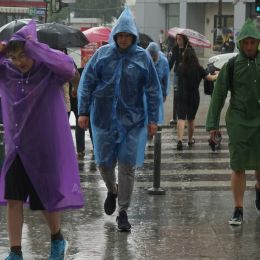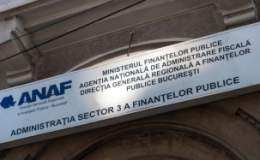First Time Home Buyer Tax Credit program in United States can be partially compared with First Home Program in Romania, as George Ene (photo) vicepresident of US-based Rabobank Group’s Leveraged Finance.
First Home program has three major flaws: 1) it is randomly capped to 60,000 euros, thus favoring a certain class of apartments, 2)it is limited to a total ceiling of 1 billion euros, which means few first-time homebuyers will actually benefit of this facility, and 3)it can pave the way to a softening of lending standards, as the banks are no longer so much concerned on the risk of default, as the government will take the brunt of it.
In contrast, in the first-time homebuyer scheme in United States, the arrangement is strictly between the government and the buyer, the state grant covering 10 percent of the purchase price of the home. This is made through a tax credit, namely an amount which is returned after filing the income statement at the Revenue Service.
Under these terms, conditions are: 1) to buy the house between April 8 2008 and December 1 2009; 2)the purchase price to be more than 75,000 dollars or 80,000 dollars if purchased after December 31; 3)to occupy it and not to be a vacation home or rental property; 4)not to own another principal residence at any time during the three years prior to the date of purchase 5) the income not to exceed 95,000 dollars/year for single taxpayers or 150,000 dollars/year for married couple; 6)you neither buy it from a close relative nor sell it by the end of 2009; 7) to be US resident.
“In Romania, all the risks assumed by the state are related to borrower’s possibility of defaulting on its mortgage under First Home program. The 80% guarantee proposed by the state instead of 100% is much better, because otherwise, the program would result in mounting losses. It is still unclear on the state’s extent of implication over lending conditions”, said George Ene.
In United States, at each guarantee provided by the government there is someone who pays, a small amount, indeed, but there is someone.
“In Romania, someone should pay for this guarantee. After all, all taxpayers will pay for only 20,000 beneficiaries – and the payers of the guarantee fees should be both banks and homebuyers”, Ene concluded.
Poland’s program
The Polish government has introduced a roughly similar scheme to Romania’s First Home program, called “Family’s own home” (Rodzina na swoim). Under the program, the government covers the repayment of 50% of mortgage loan interest due within the first eight years of taking the loan. The program is aimed at enabling married couples or single parents to purchase their first home.
The program imposes certain limits on the surface of the apartment and maximum price per square meter. In a first phase, the program generated poor results, largely due to the low cap of price/1 square meter, where few home purchases were eligible.
“The basic idea is more less the same, although Polish regulations seem to be more flexible (adjusted to the local purchase power) and affordable for the potential buyers”, said Karol Dzieciol, senior consultant at Poland’s real estate advisor Reas.
Reas’ specialist has been writing since May on the major shortcomings of the Poland’s incentive program, effective as of January 1, 2007.
“Within the two years of its operation, however, the program did not generate too good results. This fact can be attributed price per 1 square meter of usable area in residential apartments which according to the original arrangements was not adjusted to the reality of the rapidly growing market. As a result, from the moment the act came into force until the end of 2008, only 10 000 families exercised their right to loan subsidies, and the total amount of mortgages was approximately 383 million dollars”, said Karol Dzieciol.
Therefore, nearly 90% of concluded contracts concerned the purchase of real estate located outside voivodeship cities, and the share of the primary market was simply marginal.
Australia’s First Home Owner Grant
The first home program that pioneered state home ownership assistance was implemented in Australia, in the summer of 2000, under the name “The First Home Owner Grant (FHOG)” and consists in providing a grant of 7,000 dollars for eligible first-time homebuyers.
In order to be qualified to receive the grant, the buyer has to be a natural person and at least 18 years of age and doesn’t own a residential property. In addition, the applicant must be a permanent resident of Australia and must occupy the home for a continuous period of 12 months.
Furthermore, he has to motivate his/her interest for the residential property for which the applicant wishes to receive the grant. Obviously, neither the applicant nor his partner must have received a grant or previously applied for a similar grant scheme.
The Australian Government supplemented the FHOG with another similar scheme, called “First Home Owner Boost". The program is designed to homebuyers who already applied for the first program, FHOG in October 14, 2008 – June 30, 2009.
Therefore, the potential buyer of an already established home, can be provided with an extra 7,000 dollars grant (apart from the initial 7,000dollars). The applicant can receive an extra 14,000 dollars for buying or building a new home.
Romanian’ first home scheme
Locally, the beneficiaries of First Home program are natural persons who don’t own a residential property in common or individually, at the date of becoming effective (June 4, 2009), and don’t have a mortgage loan underway.
Potential buyers must pay 5% in advance of the home’s purchase price, of the price is lower or equal to 60,000 euros. If the purchase price is higher than 60,000 euros, the applicant must pay 3,000 euros in advance, in addition to the price difference between 60,000 euros and the actual purchase price.
Applicants eligible to the mortgage loans under First Home program, will pay interest rates lower by 42-49% in average than current lending conditions, as the minister of finance, Gheorghe Pogea said recently.
On May 28, the Government said the persons who would buy a house under the program will benefit of a VAT reduced by 5%, measure applicable for social dwellings.
Moreover, the persons qualified for the program are compelled not to alienate the purchased house in the first five years. The residential property purchased under First Home program must be registered at the Land Registry Office, to be located in Romania and must be free from encumbrances.
Citeste si:
Calculator Salariu: Afl─â c├ó╚Ťi bani prime╚Öti ├«n m├ón─â ├«n func╚Ťie de salariul brut ┬╗
Te-ar putea interesa și:



















































































![HR [PLAY] Tech Workout - 11...](https://www.wall-street.ro/image_thumbs/thumbs/973/973fe0a3888d417feff63de42e814180-260x260-00-65.jpg?v=1713273067)









